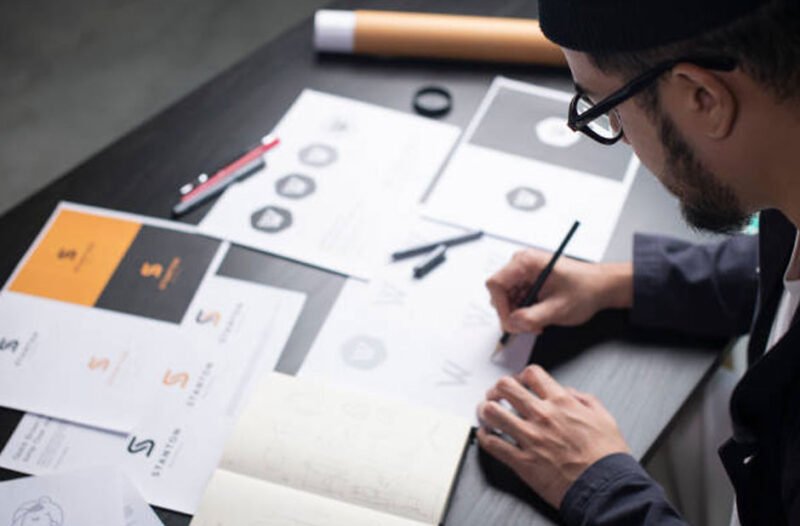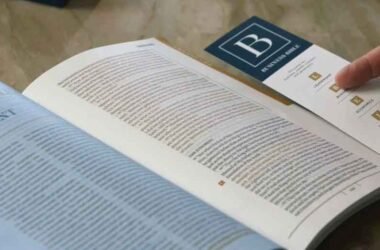A logo is so much more than just an image; it’s the graphic anchor of your brand’s identity. It’s what people first recall, a symbol that encompasses everything your company represents, its mission and values, all contained within one recallable mark. A good logo is a trust-building, competitive differentiation, and customer loyalty-building tool for small businesses. It is a silent ambassador, telling your brand story before a word is even read. Creating this symbol is a strategic initiative that fuses art and commerce, though. It demands intimate knowledge of your market, audience, and ambitions. For those seeking to make a lasting impression, quality Business Logo Design UK solutions can be the difference-maker in an oversaturated market, taking an idea and making it a powerful visual identity.
The Strategic Design Process(From Brief to Final File)
Logotype design is a systematic process, not a burst of free-form inspiration. It begins with a comprehensive client brief to discover the business, its clients, and competitors. Research and brainstorming then follow thoroughly. Initial rough sketches are followed by electronic ideas, which are developed and then critiqued. The chosen idea is developed thoroughly with particular care taken to spacing, balance, and scalability. The process ends with the provision of final logo files in different formats (such as AI, EPS, PNG, JPG) for print and digital purposes. This guarantees the logo appears crisp on a billboard and a business card, giving the client a finished and functional brand asset.
Most Important Things to Consider in Your Small Business Logo
When ordering a logo, there are some very important factors to consider. Above all, simplicity is the number one consideration; a plain, uncluttered design is infinitely more memorable and copiable than one that has a variety of complications. Second, ensure that it’s flexible, legible in colour, black and white, and at a very small size. It must be timeless, not something that will date very quickly. Most importantly, it must be appropriate to your industry and market fun script could be fine for a children’s brand, but would be utterly wrong for a solicitor. Finally, it must be unique so as not to be mistaken for rivals and future legal issues, which will differentiate your business.
Avoid the Common Pitfalls and Popular Clichés
All small businesses are caught out in common logo design issues. Among the largest is using stock photos or clipart, making a generic, non-exclusive logo that cannot be trademarked. Highly detailed designs with too many details are illegible when reduced in size. Relying on colour to work means that it will not work in single-colour applications. The most dangerous trap, maybe, is chasing design trends, like some colour schemes or abstract shapes, that will age your logo two years from now. The goal is to create a timeless, classic mark that represents your business for generations to come, not just for a season.
DIY vs. Professional Designer (Thinking through the Options)
While bargain logo manufacturers and bargain contest websites are tempting when money is tight, they come with fantastic risks. They will create generic, uninspired logos without ut sound strategy and likely with clandestine use rights or ownership issues. An active partnership comes from a professional designer. They make the time to research your business in depth, providing professional guidance and creating a distinctive, trademarkable logo backed by strategic vision. They provide a complete set of files and usage guidelines to use correctly. Such a professional touch safeguards your brand and offers a significantly higher return on investment, laying a strong foundation for all future development.
Developing a Brand(Your Starting Point in Your Logo)
It’s crucial to remember that, though significant, a logo is not the brand. Your brand comprises your reputation, customer service, and emotional connection, that is, the whole customer experience. Flying overhead is your emblem. Thus, create your new logo as the base upon which to grow a wider, unified brand identity. Create a comprehensive brand guideline using it that controls how your visual language is used on all touchpoints. That consistency makes a straightforward graphic a great indication of reliability and quality. In the long run, your present logo is the well-known signifier that grounds every encounter and aids in creating a strong, consistent, and lasting brand.
In Conclusion
For any small firm trying to develop a reputable and long-lasting identity, a well-crafted logo is a priceless asset. The result of a deliberate process combining creative artistry with commercial savvy, it produces a visual emblem conveying your core beliefs both immediately and powerfully. Understanding its goal, respecting the design process, and funding for professional help will give your brand’s future a solid basis. This is a calculated investment that creates recognition, boosts confidence, and offers a flexible foundation for your whole marketing campaign; ultimately, it leads to long-term business success and expansion.









